Thinking of coming to Bali and not sure when the best time to visit will be? Well, we don’t think there’s ever a bad time to come to the island but our guide will help you decide when the best time for you holiday is all the same.
The Quick Answer On The Best Time To Visit Bali
OK, for most people, the question of when to visit will boil down to two main factors:
- High season vs low season – because this has an impact on costs for airfare, accommodation, attractions, etc. and because it also has an impact on the volumes of crowds at different places.
- The weather – because sunshine, rainfall, temperatures, and sea conditions can make a big difference.
For us, in general, you’re going to find the best balance of these two factors during the shoulder season in Bali.
So, the best months to come to Bali are: May (shoulder season) as well as June, September and October, which are also Mid-season and shoulder season months.
And other awesome months to visit are March, April and November as while they are in the rainy season, the Bali weather remains pretty stable and pleasant at these times.
The Bali summer months, in the heart of Bali’s dry season/peak season of July and August, have the best weather. But it can be super busy at this time of year and it’s when the prices of flights, accommodation, etc. are at their highest.
The remaining Winter months are not the best times for spending all day, every day on the beach, but you can still enjoy the cultural highlights, restaurants and chilling out. But be warned, in South Bali, the Christmas to New Year period is the busiest time on the island bar none.
You need to book well in advance for that part of the peak season and you will need to pay premium prices even though it’s the wet season/rainy season.
We should note that the rainy season of last year (2024-2025) was not at all typical for the low season on the island, and it was much rainier than normal. Most years, there is not enough rain rather than too much.
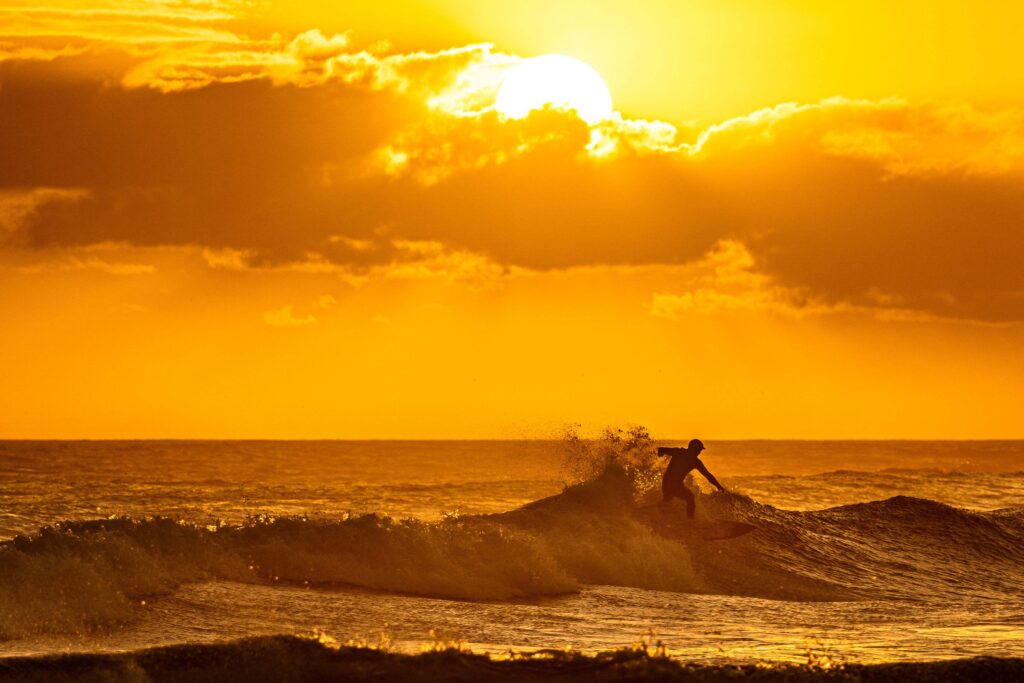
When Are The Busiest Times To Visit Bali – Peak Season Explained
The peak season highlights of the year in Bali include:
- Easter – it’s not as busy as Christmas or New Year, but it’s still pretty busy as the schools are out at this time of year
- Christmas and New Year – without doubt the busiest time of the year, and traffic can be horrendous, particularly in the Southern beach towns and around the airport in Denpasar. If you come to Bali at this time of year, always set off for your flights much earlier than you need to.
- Chinese New Year – this is a busy time for tourists from the rest of the Indonesian archipelago
- Eid al-Fitr – another busy time for domestic tourists coming to celebrate the end of Ramadan
- Mid-July to End-August – July and August are the busiest times of year, apart from Xmas/New Year, particularly in the beach towns of the South
Note: Eid al-Fitr and Chinese New Year have variable dates every year as they are based on a lunar calendar.
Does That Mean Busy = Don’t Come?
No, of course not. Bali is busy at these times of year because it’s the best time to visit for many people.
While the high season from Christmas to New Year is something of an oddity and really down to the Australian school holidays, the rest of the high season is because the tropical climate is at its best, and the school holidays are on.
Sunny weather is a big attraction of the island, and while you get plenty of sun in the low season, there’s no doubt that you get the most sun in the main high season.
If you want a Bali holiday with fewer crowds, then you might choose not to come in high season or the festive season and aim for the shoulder season or rainy season, instead.
Rain showers in Bali never tend to go on too long, and even at the rainiest part of the year, you can enjoy outdoor activities, and it’s still typically warm and pleasant.
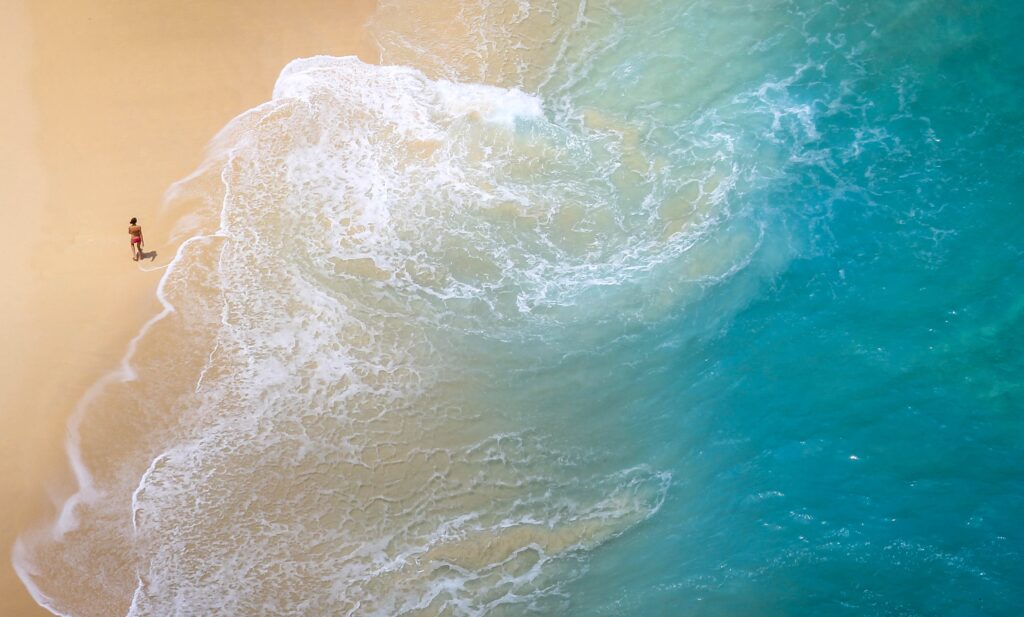
When Are The Dry Season And The Rainy Season?
There are only two distinct seasons in the tropics, the dry season and the wet season (or rainy season).
The dry season runs from April to October, and the main thing to know about Bali’s dry season is that it means less rain on the island, but it also brings a cool breeze from offshore.
Temperatures ranging from 27-32 degrees Celsius on average, with lower humidity, means that it’s a very nice time of year to visit. It is the most popular time of year to visit the island, excluding the Christmas/New Yea period.
One unusual benefit of Bali’s dry season is that the beaches tend to be cleaner as the currents that wash garbage from the rest of Indonesia ashore aren’t present.
While technically, the temperatures are higher in the dry season, in practice, the low humidity makes this time of year feel cooler than the wet season.
The wet season or rainy season in Bali runs from November to March and it’s still warm, where temperatures typically range from 24-29 degrees Celsius.
It’s the time of year, as the name rainy season suggests, that the island gets the most rainfall.
Mostly, though, it doesn’t rain all day, and the Bali weather at this time of year still provides plenty of sunshine.
However, some beaches do get trash washed ashore at this time of year due to ocean currents.
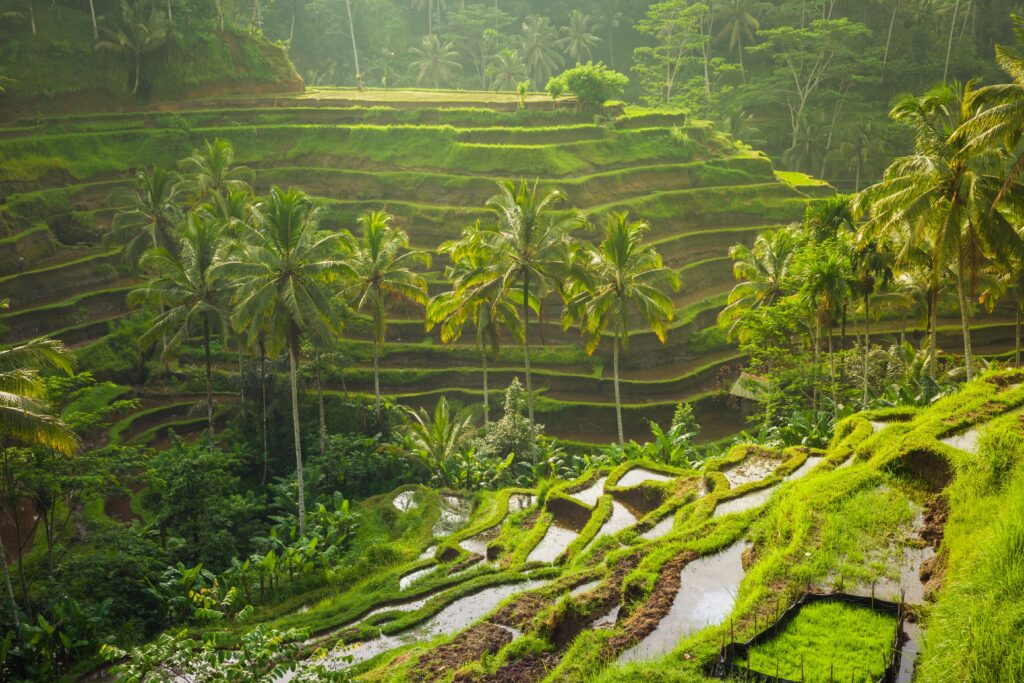
Key Events In Bali’s Dry Season
The dry season has plenty of popular events for visitors to attend, and some of the best include:
- The Bali Arts Festival usually runs from June to July and celebrates the art of the island. You can enjoy handicrafts, music, dancing, parades and more at this time of year.
- The Bali Kite Festival is a popular festival in July, all dedicated to the Balinese art of kite making. While there is a “main festival site”, you can find people enjoying this sport throughout the island in this month.
- Ubud Food Festival is normally held in April, and it’s a very popular place for foodies keen to immerse themselves in the diverse and exciting cuisines of the Indonesian archipelago.
Key Events In Bali’s Rainy Season
There are fewer events held in the rainy season than in the dry season, because there are fewer crowds and the Bali weather might not hold out for the day.
However, Nusa Dua Light Festival bucks the demand for clear skies and is held from October to November. If you like dazzling light shows, you’re in for a treat here.
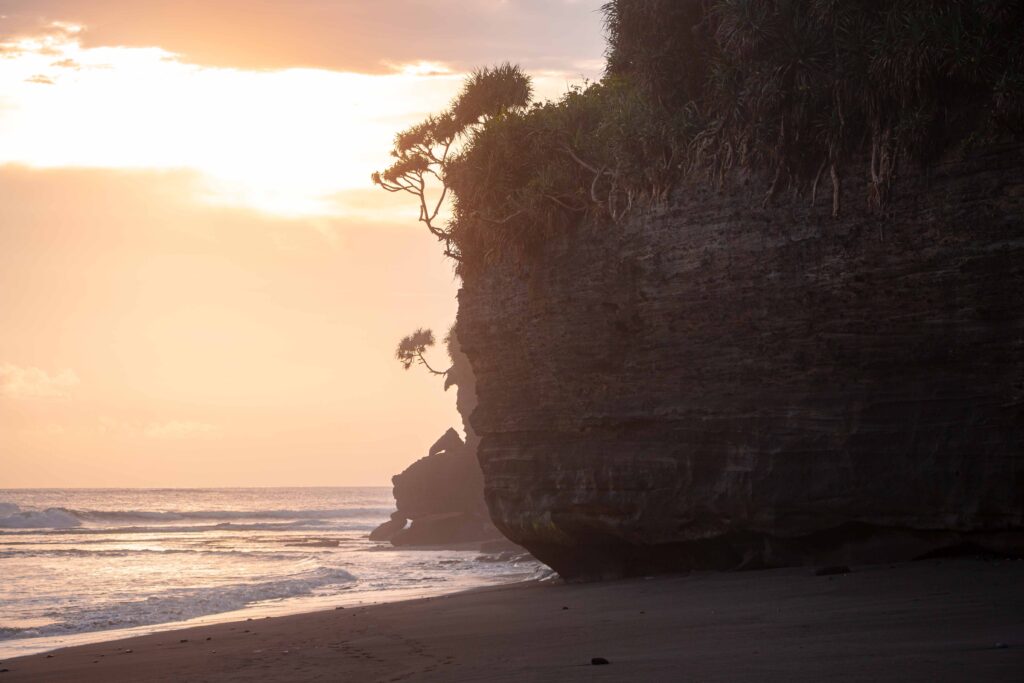
Micro-Climates: The Different Parts Of Bali And Their Weather Conditions
OK, when it comes to Bali weather, you can treat the island in three separate sections.
Firstly, there are the coastal areas – particularly the South Coast, but also the East and West coast and to some extent even the North Coast. This includes areas like Canggu, Seminyak, Kuta, Sanur, Amed, Candidasa, Lovina, Padangbai, etc.
During the dry season, these parts of Bali are just about perfect weather wise time on the beach is comfortable all day long. The wet season brings more rain and humidity, and it can bring garbage pollution out of the ocean on some beaches, too.
Then the second part of Bali is Central Bali (please like Ubud and Sidemen) ,along with the highlands and the mountains (Bedugul, Batukaru, and Kintamani).
Because these places are quite a way above sea level, they are cooler during the dry season and rainy season, but they also tend to see more rain than the coastal areas at all times of year.
In the wet season, it rains a lot, but it also means that the rice terraces, jungle and waterfalls are all better to look at.
In the mountains, you may also enjoy morning mist/fog over the landscape, and it can be very pleasant for those who love to get out into nature.
Then, finally, we have the Bukit Peninsula (Bali’s southernmost tip, which includes Uluwatu, Ungasan, Pecatu and Nusa Dua) as well as the Nusa Islands (Nusa Lembongan, Nusa Penida, and Nusa Ceningan).
These areas are hotter than the rest of Bali, and there is often an issue with groundwater supplies in the dry season. This can lead to hotels and villas requiring water deliveries by truck.
However, this also means there is often less rain and humidity in the rainy season to offset that, and these areas can be a good choice in the low season.

What Is The Climate Like In Bali?
Bali has a tropical climate and that means there’s not much variation in the weather all year round.
The dry season is fairly consistently cooler and drier than the rainy season, but otherwise, maximum daily temperatures barely vary by 4 degrees Celsius across the year.
Let’s Talk Rainfall On The Island
In the dry season, it can sometimes go weeks without rain, but it’s also worth noting that it can rain more regularly. Between April and September, the island sees fewer than 10 days of rain each month on average, and from October to March, it can be 20+ days of rain.
However, the maximum rainfall comes in January and is only 35 centimetres, and in the driest months it’s just 5 centimetres!
Three Ways To Look At Climate When You Visit Bali
There is a very simple way to divide up the year if you want a rough guide to the Bali weather and the best time to visit for you.
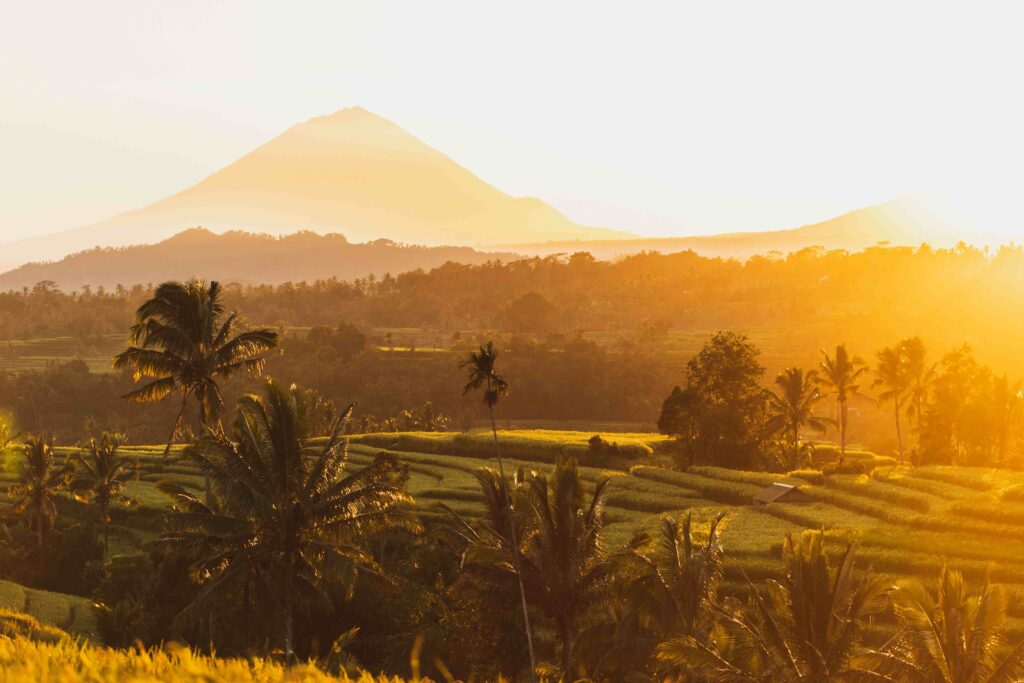
Peak Season (April – September)
This time of year is typically warm and sunny, and temperatures typically range from 23 to 30 degrees Celsius.
It’s the time of year with the most popular festivals. It is often the best time for outdoor activities.
However, it has higher prices and flights, accommodation, and attractions may all cost more.
Moderate Season (October – December)
The temperatures are a little milder and range from 21-28 degrees Celsius. You get days of breezy wind and intermittent showers rather than the occasional rainfall of the dry season.
The hotel and accommodation rates come down a bit, and this may be the best time to visit Bali if you’re on a more modest budget.
Off Season In Bali (January – March)
This is the time of year with the heaviest rainfall and the highest levels of humidity. It can be as cool as 22 degrees and as hot as 31 degrees Celsius.
Tourist attractions and the beaches tend to see fewer crowds, and they can be much easier to get around as a consequence.
It’s also the best time to visit Bali if you’re on a very tight budget. Low season sees discounted hotel rooms, flights, and many other things.
Bali Weather Summarised By Month
So, to round things off, let’s take a quick look at a month-to-month breakdown of the Bali weather.

Jan
This month is almost always the rainiest month of the rainy season. However, even in January it won’t rain every day and there will be some very hot sunny days in among the more overcast moments. While in the beach towns, the temperatures stay pretty high, if you head up into the mountains, nighttime temperatures can drop as low as 15 degrees Celsius!
Feb
February is still the rainy season, but the rain is a bit lighter than in January, and hot and humid is still the way of things. The temperature gauge, during the day on the beach, tends to stick at around 26 degrees Celsius all month long. It’s not a great month for snorkelling as the rough seas aren’t great for visibility.
Mar
Things are getting drier, but occasional showers are more often than no,t particularly in the afternoons. The days are hotter than in January and February, and temperatures are more like 27 degrees Celsius. The humidity turns up a notch in March, and it can feel much hotter than it is. If you need to escape the heat, Ubud and the mountain areas are a little cooler.
Apr
The rainy season starts to draw to an end in April, and showers are now more occasional. The sunny days are lovely, and temperatures start to rise a bit. With fewer coastal winds, the visibility in the ocean water is much better, and it’s time to break out the snorkelling and diving gear, particularly in the waters on the East Coast.
May
The hottest month of the year, and the mercury spends its time around 29 degrees Celsius most of the time. It’s awesome for climbing mountains and going diving, and other outdoor activities. It’s also not all that busy on the island, so lower prices are the norm. If you want the best time to visit Bali, without breaking the bank, May is it.
Jun
June is a fantastic month for weather in Bali, sure, the school holidays are starting and prices are going up. But you can’t argue with an average 27 degrees and much less humidity than in the early months of the year and it’s still not quite peak season, so there are fewer crowds to deal with.
Jul
July is when the peak season starts in earnest, with school holidays all around the world starting to overlap. The average temperature of 27 degrees Celsius is very appealing, and the resort towns start to fill up. You can enjoy great snorkelling at this time of year.
Aug
With 10 hours of sunshine, on average, each day, you can’t beat the weather here in August. It’s the sunniest month of the Balinese year. However, there’s no doubt that this amazing weather brings some serious crowds and the beach towns can feel a little cramped at times.
Sep
This mainly dry month continues to enjoy plenty of sunshine and temperatures remain around 27 degrees Celsius. The European schools are back in session, though, so there are fewer bodies on the island and some deals are starting to appear for accommodation, flights, etc.
Oct
The wet season begins at this time of year, but you won’t miss the dry season that much. It remains warm, and the rainfall is still not every day. It’s a good time to go diving in West Bali around Menjangan Island.
Nov
It’s getting wetter in Bali now, but there are still plenty of sunny days to enjoy. However, the rains make mountain climbing a more risky proposition, and you might want to stick to jungle treks and wandering through the rice paddies at this time of year.
Dec
While there are still sunny days, there are also plenty of rainy ones at this time of year. It’s not the best time to visit if you want to snorkel, dive or climb mountains, but thanks to Christmas and New Year holidays, it’s actually a very popular time to be in Bali.
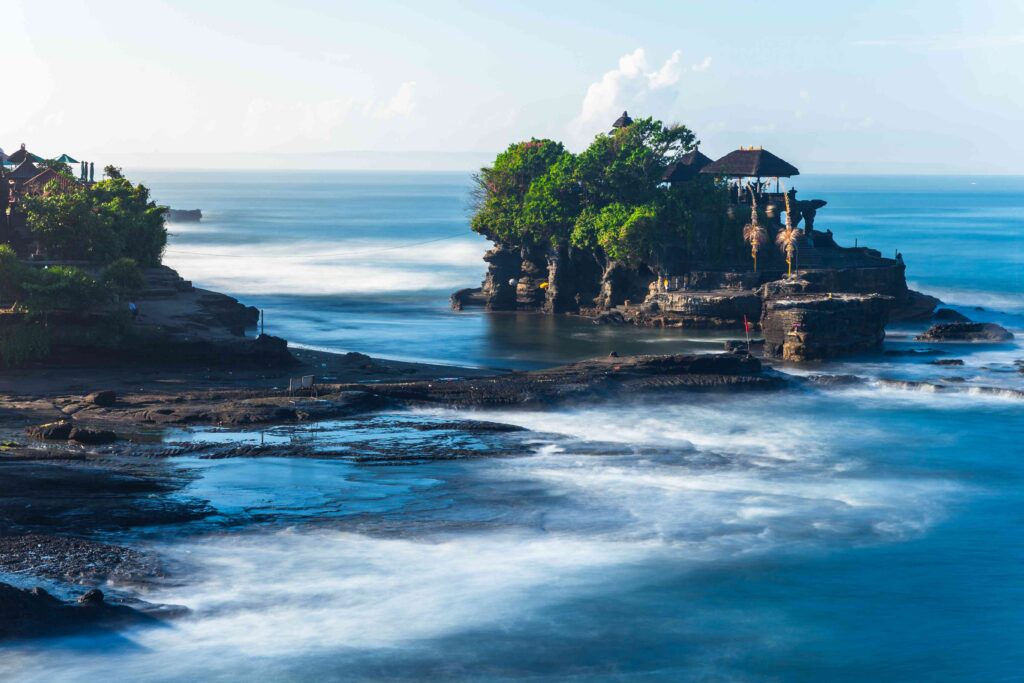
FAQs
What Month Is The Best To Go To Bali?
If we were to pick a month to come to Bali, we’d choose May. That’s because the shoulder season month is very much similar to the dry season from a weather conditions perspective, and you can enjoy water sports, outdoor activities, etc., galore with only occasional showers.
But there are also fewer tourists on the island as the tourists flock to the island in June, July and August during the school break periods.
So, you get great weather, at one of the cheapest times to visit Bali and you can go visiting temples, wandering through rice paddies, head out to the Nusa islands without fear of terrible sea conditions, etc. and avoid crowds.
However, there is no bad time to visit Bali, and it won’t make a big difference to the quality of your holiday whether you come in mid-July, May or September.
What Is The Best And Worst Month To Visit Bali?
As we’ve said above, we think the best month to visit Bali is going to be May because you can get your beach time and enjoy the best weather before the tourism season gets into full swing.
However, the worst month to come to Bali is probably January or February because you get more rain at this time of year.
However, this downside can be offset by smaller crowds, big discounts when you go to book flights, lower prices for hotel rooms, yoga retreats, etc. and this part of the wet season is a good time to explore Balinese culture.
However, we guarantee that whenever you come to Bali won’t matter too much, you can have a great time here all year round.
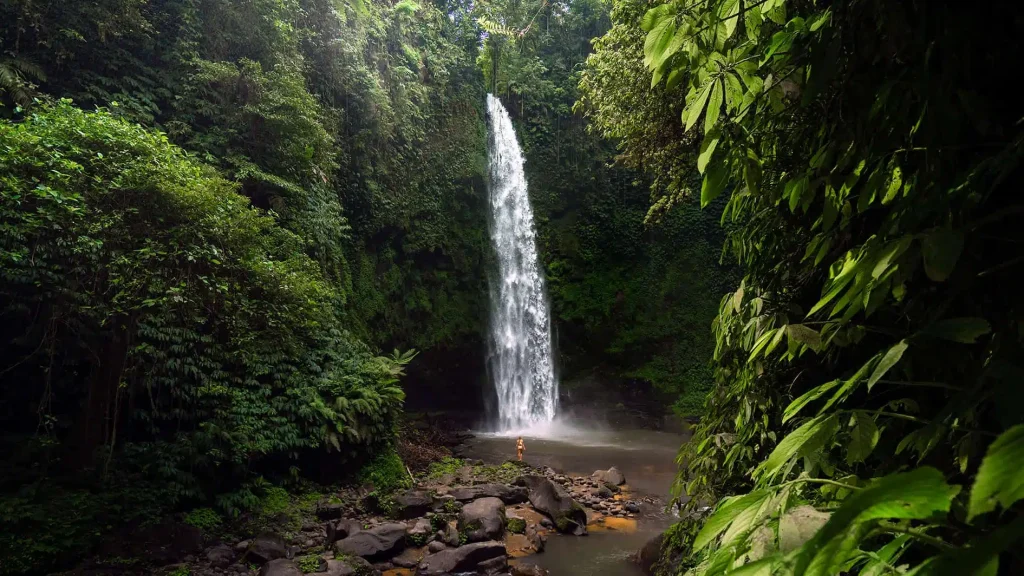
What Is The Rainy Season In Bali?
The rainy season or wet season in Bali is typically considered to be between the months of November and April.
This roughly coincides with the low season on the island, though the weeks around Christmas and New Year tend to buck this trend and are the most popular time to visit Bali.
However, with daytime temperatures ranging from roughly 25 degrees to 32 degrees, it remains hot on the island during the wet season, and there’s still an average of 8 hours a day of sunshine.
Many people choose to risk the occasional rainfall of the rainy months, because it’s a great time for certain water sports, the best time to see waterfalls and rice terraces, and enjoy relaxing activities like trips to spas where lower humidity isn’t necessary.
It’s also the cheapest time to visit Bali, and you can enjoy discounts on flights, hotels and even places like water parks (Waterbom Bali is a popular choice) because of the reduced number of visitors.
What Month Is Hottest In Bali?
The month with the highest average temperature in Bali is May, but it’s worth noting that the humidity of the rainy season can mean that cooler months can feel much hotter overall than May.
If you’ve ever seen the “feels like” component to a weather forecast, you’ll know what we mean by this. We’d say that March can often feel like the hottest month of the year because of the temperature combined with the humidity.

Final Thoughts On The Best Time To Go To Bali
High season or low season? Dry season or rainy season? There’s never a bad time to go to Bali, the island is amazing all year round.
However, there’s probably a “best time for you to visit Bali” and that means picking the time of year that best suits your needs.
If you’re planning a Bali wedding, for example, you might prefer the heart of the dry season to minimise chances of rain.
On the other hand, if you want a romantic break with a partner and fewer crowds, you might choose to visit the island in the low season and the shoulder season month of May.
The good news is that Bali doesn’t see a lot of extreme weather, and things like tropical cyclones are relatively unheard of. So, you can book your Bali trip with confidence today.
